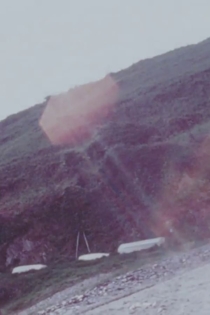
Chris Welsby
1948 (77 лет)Seven Days
Chris Welsby
Seven Days invites the viewer to contemplate the complex relationship between the structures we invent in order to observe the natural world and the structure we perceive as a result of those observations. The resulting sequences of images suggest a relationship between technology and nature based on principles other than exploitation and domination.
Seven Days

River Yar
William Raban, Chris Welsby
A camera recorded one frame every minute (day and night) for two separate three-week periods in autumn and spring. The film is shown on two adjacent screens, each having a soundtrack that was recorded on a sampling basis. The left hand screen was shot at the autumn equinox and the right-hand screen at the spring equinox. The structure of the film is based on the rotation and tilting of the earth as we pass from summer to winter and back. The centre of the film coincides with the equinox and is the point at which day and night are the same length on both the left and the right screen.
River Yar

Sky Light
Chris Welsby
An idyllic river flows through a forest, flashes of light and colour threaten to erase the image, bursts of short wave radio and static invade the tranquillity of the natural sound. The camera searches amongst the craggy rocks and ruined buildings of a bleak and windswept snowscape, a Geiger counter chatters ominously in the background. The sky is overcast at first but gradually clears to reveal a sky of unnatural cobalt blue.
Sky Light

Stream Line
Chris Welsby
The film is a continuous, "real time" tracking shot of a stream bed. The length of the track was ten yards. The camera was suspended in a motorized carriage running on steel cables three feet above the water surface. The camera pointed vertically downwards recording the contours of the stream bed and the flow of water along its course. The sound of the water was recorded synchronously from the moving carriage.
Stream Line

Park Film
Chris Welsby
This is not so much a film about a park, or a record of the people passing through the park. Here the camera is not a passive observer, nor is it used as a surveillance device. Rather, the camera in Park Film, like the passers by who trigger its shutter, is an active participant in the interaction between a park and the city which surrounds it.
Park Film

Drift
Chris Welsby
The overall feel of Drift is sombre and mysterious; a study of winter light falling on the surface of water, metal and cloud. The dominant colour is grey; grey infused with a multitude of ocean blues and greens. There is little land in this film and very few landmarks from which to navigate from one space to the next. The picture plane is in continuous motion like the ocean which, on the surface at least, is the subject of Drift.
Drift

Wind Vane
Chris Welsby
Two cameras mounted on tripods with wind vane attachments were positioned about 50 feet apart along an axis of 45 degrees to the direction of the wind. Both cameras were free to pan through 360 degrees in the horizontal plane. There are three continuous 100 foot takes for each screen. The movements of the two cameras, which were filming simultaneously, were controlled by the wind strength and direction.
Wind Vane
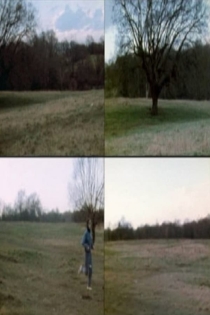
Sea/Shore
Chris Welsby
The notion of a line which divides the land from the sea is a notion of convenience which is only valid in certain circumstances. If there is a line at all, it only exists for a second or so, and is never repeated again. This film was shot on this imaginary line, but the leading or trailing edge of the wave is never represented. The shore line is replaced by a frame line which divides each one-second "take" from its neighbour. The frame is either filled with water or littered with stones and sand exposed after the wave has receded. The image on the screen, the organic rhythm of the waves, is not destroyed by the violence of the structures imposed upon it. Nature emerges uninhibited, revealing yet further complexities of shape and form. The illusory shore line remains invisible, trapped on celluloid, hidden by the mechanics of the projector, and de-materialised by the illusion of cinematographic movement.
Sea/Shore
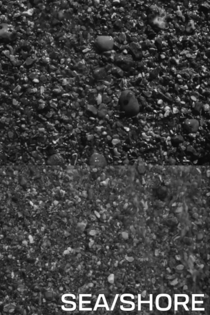
The Tree
Chris Welsby, Chris Welsby
The camera was placed on the flexible branch of a tree in a strong wind. The composition included both stationary and moving trees (a wooded landscape). The relationship of this landscape to the vertical and horizontal plane was maintained as much as possible. The camera ran continuously until all the film was exposed. The world is seen from the point of view of a tree as its branches sway to the rhythm of the wind.
Tree

Windmill II
Chris Welsby
Windmill II is one of a series of films (Wind Vane, Anemometer, Tree, Park, Estuary etc.) which uses an element present within the frame as a feedback device to control an aspect of the recording process. In this case it is the wind moving the leaves on the trees within the frame which also causes the windmill to rotate like a secondary shutter in front of the camera. This rotation of the mirrored windmill blades causes the image on the screen to alternate between the space in front of the camera, seen intermittently through the blades, and the space behind the camera, reflected in the blades. When the windmill reaches a particular speed, a third space is also created as the deep space of the picture plane fragments and becomes a two dimensional abstract surface of colour and light.
Windmill II

Tree Again
Chris Welsby
Strapped high on a moving branch of a palm tree, the camera sways gracefully in the ocean breeze. In the frame we see other waving branches, their delicate leaves like so many tiny green sails, vibrating in response to the force of the wind as it carries water vapour from the ocean to the land. The movement of these branches creates a dynamic counterpoint between tree and camera.
Tree Again
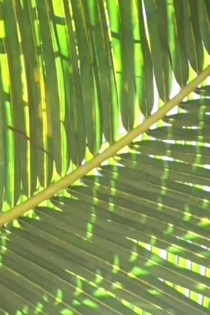
Casting Light
Chris Welsby
As the harsh reality of Climate Change takes hold in the public imagination, the idea of nature as landscape becomes increasingly inappropriate. Landscapeis more than something to be admired in our leisure time or an artifact to be hung on an art gallery wall. It is, as everyone is surely aware, the planet we live on and includes all biological life. The deepening uncertainty surrounding humanities future now makes it impossible to contemplate the beauty of this world without grieving for all that we have lost. This loss of innocence is accompanied by an ever- present foreboding for that which the future holds. Casting Light invites the viewer to take some time to contemplate their own relationship to the moving image and to the subtle intricacies of light falling on water.
Casting Light
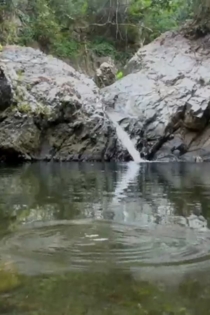
Crocodile Dreams
Chris Welsby
In the early afternoon a cool breeze raises white caps on the ocean before rushing busily inland. The palm trees respond with broad circular gestures and their lower branches echo this wave-like rhythm, by turns revealing and concealing the cool shade and patches of sunlight below the forest canopy. Light escaping from a perfect blue sky sends sharp shadows flickering from branch to branch as patches of ragged sunlight chase each other back and forth across this delicate web of tropical plant life. Meanwhile, a short distance away, a crocodile is dozing in the hot afternoon sun. She is completely still, but from time to time her heavily armoured eyelids blink open and just as quickly shut. In that instant, the light reflected from the precarious world about us is lost in a tunnel of reptilian darkness stretching from this moment back to the beginning of time.
Crocodile Dreams


